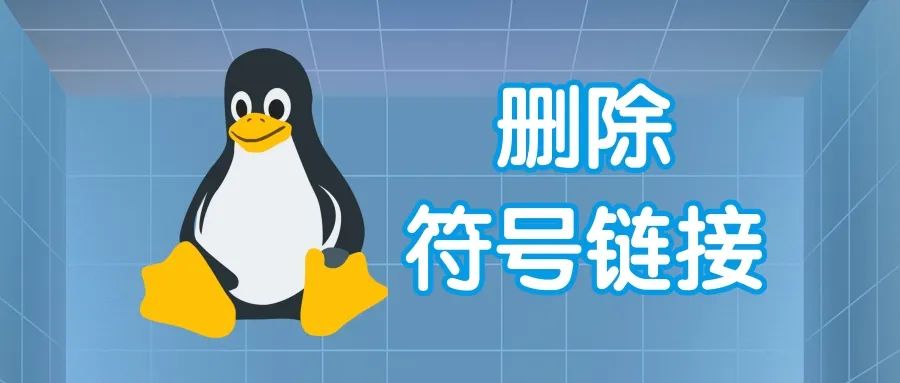
In Linux systems, symbolic links (Symbolic Link, abbreviated as Symlink) are a very practical type of file system object, similar to shortcuts in Windows systems. Symbolic links can point to files or directories, providing users with convenient access paths. However, sometimes we may need to delete symbolic links that are no longer needed. This article will detail various methods, precautions, and related tips for deleting symbolic links in Linux, helping you easily master this skill.

Basic Concept of Symbolic Links
Before delving into the deletion of symbolic links, let’s briefly review the basic concept of symbolic links. A symbolic link is a special type of file that contains the pathname of another file or directory. Through symbolic links, users can access files or directories located elsewhere using a shorter pathname. For example, suppose we have a file located at /home/user/documents/report.txt; we can create a symbolic link pointing to that file at /home/user/report_link, allowing us to access report.txt via /home/user/report_link.
Symbolic links can cross different file systems and can point to either relative or absolute paths. A relative path is the position from where the symbolic link is located to the target file or directory, while an absolute path is the complete path starting from the root directory of the file system. These characteristics make symbolic links widely used in Linux systems, such as simplifying file access paths and creating aliases.
Common Methods for Deleting Symbolic Links
In Linux, there are several common methods for deleting symbolic links:
Using the rm Command
The rm command is the basic command used in Linux to delete files and directories, and it can also be used to delete symbolic links. The basic syntax for deleting a symbolic link using the rm command is as follows:
rm [options] symbolic_link_nameFor example, if we have a symbolic link named mylink, we can use the following command to delete it:
rm mylinkWhen using the rm command, there are some common options that can help us delete symbolic links more flexibly:
-
• -i option: Prompts the user for confirmation before deleting the symbolic link. This is very helpful to prevent accidental deletions. For example:
rm -i mylinkAfter executing this command, the system will prompt “rm: remove symbolic link ‘mylink’?”, and the user must input y (for “yes”) or n (for “no”) to confirm whether to delete the symbolic link.
-
• -f option: Forces the deletion of the symbolic link without any prompts. This option is very useful when you are sure you want to delete the symbolic link and do not want to see any prompts. For example:
rm -f mylinkUsing this command will directly delete the mylink symbolic link without any prompts.
It should be noted that the rm command will only delete the symbolic link itself and will not delete the target file or directory that the symbolic link points to. This is an important feature of symbolic links and a key point to be aware of when deleting symbolic links.
Using the unlink Command
The unlink command is specifically used to delete symbolic links, with the basic syntax as follows:
unlink [options] symbolic_link_nameFor example, to delete a symbolic link named mylink, you can use the following command:
unlink mylinkCompared to the rm command, the unlink command has a relatively single function; it is only used to delete symbolic links and does not support deleting regular files or directories. However, the unlink command is more clear and direct when deleting symbolic links, avoiding the risk of accidentally deleting other types of files.
Using the rm Command with Wildcards
In some cases, we may need to delete multiple symbolic links in bulk. In this case, we can use the rm command with wildcards. For example, suppose we have a directory containing multiple symbolic links with the .link suffix; we can use the following command to delete all these symbolic links in bulk:
rm *.linkThis command will delete all files with the .link suffix in the current directory, including symbolic links. It is important to be cautious when using wildcards for bulk deletion to ensure that other important files are not accidentally deleted.
Precautions When Deleting Symbolic Links
During the process of deleting symbolic links, there are some important precautions to remember to avoid unexpected situations:
Confirm the Target of the Symbolic Link
Before deleting a symbolic link, it is best to confirm the target file or directory that the symbolic link points to. This is because a symbolic link is merely a reference to the target; deleting the symbolic link will not affect the target file or directory. If the target file or directory is accidentally deleted, it may lead to data loss or other serious consequences. You can check the target of the symbolic link using the following command:
ls -l symbolic_link_nameFor example:
ls -l mylinkAfter executing this command, it will display relevant information about the symbolic link, including the path of the target file or directory. By checking this information, we can ensure that we are deleting the correct symbolic link.
Avoid Accidental Deletion of Target Files
As mentioned earlier, the rm command will only delete the symbolic link itself and will not delete the target file or directory. However, in some cases, if the wrong command or parameters are used, it may lead to the accidental deletion of the target file or directory. For example, if we use the rm -rf command (recursive force deletion) to delete a directory that contains files or directories pointed to by symbolic links, then the target files or directories may also be deleted. Therefore, when using the rm command, it is important to be careful to avoid accidental operations.
Handling Dangling Symbolic Links
A dangling symbolic link refers to a symbolic link that points to a target file or directory that no longer exists. When deleting symbolic links, dangling symbolic links may cause some issues. For example, if you try to access a dangling symbolic link, the system will prompt an error message. Before deleting a dangling symbolic link, it is best to confirm whether it needs to be retained or whether a new symbolic link pointing to the correct target needs to be recreated.
You can find dangling symbolic links using the following command:
find /path/to/search -type l -xtype lThis command will search for all dangling symbolic links in the specified directory (/path/to/search) and its subdirectories. By finding dangling symbolic links, we can promptly identify and address these potentially problematic symbolic links.
Permission Issues
When deleting symbolic links, you may encounter permission issues. If the permission settings of the symbolic link do not allow the current user to perform the delete operation, then the rm or unlink command will report an error. In this case, you can use the sudo command to obtain superuser privileges and then execute the delete command. For example:
sudo rm mylinkor
sudo unlink mylinkWhen using the sudo command, the system will prompt for the superuser password. After entering the correct password, you can execute the delete command as the superuser. It is important to be especially careful when using the sudo command, as superuser privileges are very powerful, and incorrect operations may cause serious damage to the system.
Advanced Techniques for Deleting Symbolic Links
In addition to the basic deletion methods and precautions mentioned above, there are some advanced techniques that can help us manage and delete symbolic links more efficiently:
Using the find Command with xargs for Bulk Deletion of Symbolic Links
If you need to delete a large number of symbolic links scattered across different directories, you can use the find command combined with the xargs command to achieve this. For example, if we want to delete all symbolic links pointing to files in the /home/user/old_files directory throughout the entire file system, we can use the following command:
find / -type l -lname '/home/user/old_files/*' | xargs rm -fThe execution process of this command is as follows:
find / -type l -lname ‘/home/user/old_files/*’: Searches for all symbolic links (-type l) in the root directory (/) and its subdirectories, and those symbolic links whose target paths match the /home/user/old_files/* pattern (-lname option is used to specify the target path pattern of the symbolic link). | xargs rm -f: Passes the output of the find command (i.e., the paths of the symbolic links that meet the conditions) to the xargs command, which will pass these paths as parameters to the rm -f command, thereby bulk deleting these symbolic links.
This method can be very efficient for bulk deleting a large number of symbolic links, especially when dealing with complex file system structures. However, it is also important to operate cautiously to avoid accidentally deleting important files.
Using the readlink Command to View the Target Path of Symbolic Links
readlink symbolic_link_nameFor example:
readlink mylinkAfter executing this command, it will output the target path that the symbolic link mylink points to. By viewing the target path, we can further confirm the information of the symbolic link to avoid accidental deletion.
Using the ln Command to Recreate Symbolic Links
In some cases, we may need to delete a symbolic link and then recreate a new symbolic link pointing to a different target. The ln command is used to create symbolic links, with the basic syntax as follows:
ln -s target_file_or_directory_path symbolic_link_nameFor example, suppose we first delete a symbolic link named mylink and then want to recreate a symbolic link pointing to /home/user/new_file.txt; we can use the following command:
ln -s /home/user/new_file.txt mylinkThis command will create a new symbolic link mylink that points to the /home/user/new_file.txt file. Through this method, we can flexibly manage and update the targets of symbolic links.


